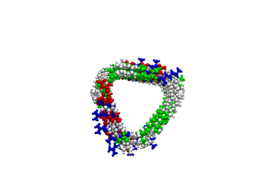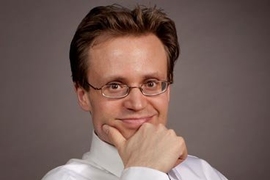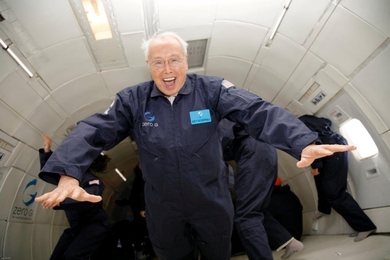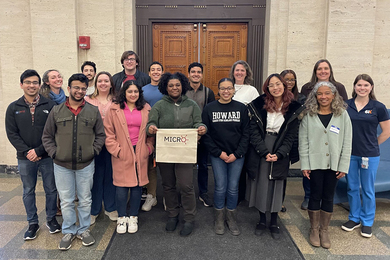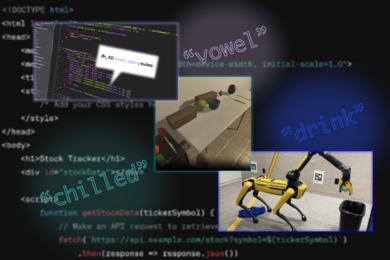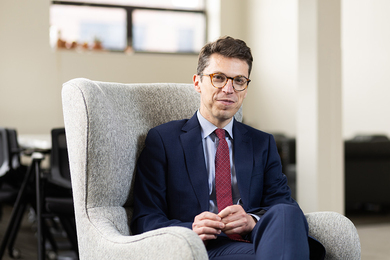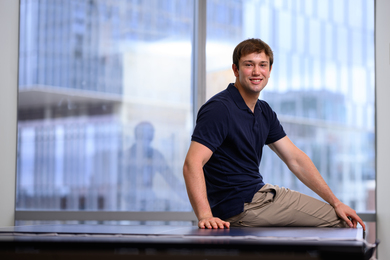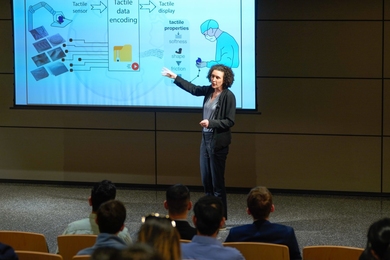On Oct. 10, MIT Provost Martin Schmidt announced that Professor Markus J. Buehler, head of the Department of Civil and Environmental Engineering, was appointed as the McAfee Professor of Engineering, effective Nov. 1. Schmidt recognized Buehler’s stature and impact in research, and his work in developing and implementing a new vision and strategic plan for the Department of Civil and Environmental Engineering (CEE).
The professorship was established by Gulf Oil Corp. in honor of Jerry McAfee ScD '40, a former Gulf chairman and CEO, and a life member emeritus of the MIT Corporation. In the mid-1990’s, CEE Professor Sallie W. (Penny) Chisholm also held the McAfee chair.
School of Engineering Dean Ian Waitz recognized Buehler for serving the community with dedication and vision. “We are deeply appreciative of all you do for MIT,” Waitz said in a congratulatory note. “Professor Buehler is an exceptionally talented scholar and leader. As department head in Civil and Environmental Engineering he has led the creation of a new vision for Course 1 and the introduction of multiple new strategic initiatives for research, education, and innovation.”
“I highly appreciate this great honor and am truly grateful for this recognition,” Buehler said. “MIT is a wonderful place that thrives with its people and ideas. I am pleased with the direction the CEE department is moving in, and most importantly, that we are building a solid foundation for new and sustained opportunities for our students, faculty, and staff in the domains of environment and infrastructure.”
Buehler is championing the concept of conjoining science and engineering to find new approaches to achieve large-scale impact on people and sustainability, a theme of focus for CEE. “Civil and environmental engineers are at the forefront of basic research, technologies, systems, and approaches that will define the future of our world. We are leading society in a new era where we combine an increased understanding of three important areas: the environment and its complex ecosystems, the infrastructure that provides the material backbone of society, and how everything we build affects the natural world, and vice versa,” he explained. “It’s imperative that our profession lead the way, so we can meet new challenges and create a better future for everyone, everywhere.”
Buehler has a multidisciplinary science and engineering background, including a PhD in chemistry from the University of Stuttgart, and a master’s degree in engineering mechanics from Michigan Technological University. He has been a member of MIT’s faculty since 2006, now in his third year as head of CEE. His teaching interests in Course 1 are focused on mechanics of materials, molecular mechanics, and multi-scale modeling and simulation. He also teaches a course on multiscale materials design in MIT’s Professional Education Program.
He has authored more than 250 archival publications and won many prizes and awards, including the Presidential Early Career Award for Scientists and Engineers, the MIT Harold E. Edgerton Faculty Achievement Award, the American Society of Civil Engineers (ASCE) Alfred Noble Prize, the American Society of Mechanical Engineers Thomas J.R. Hughes Young Investigator Award, the Minerals, Metals and Materials Society Robert Lansing Hardy Award, the Society of Engineering Science Young Investigator Medal, and the Materials Research Society Outstanding Young Investigator Award. He is a fellow of the American Institute for Medical and Biological Engineering.
He serves as editor, or on the editorial board of, several journals, including J. Engineering Mechanics (ASCE), Nanotechnology (Institute of Physics), Computational Materials Science, and J. Mechanical Behavior of Biomedical Materials.

